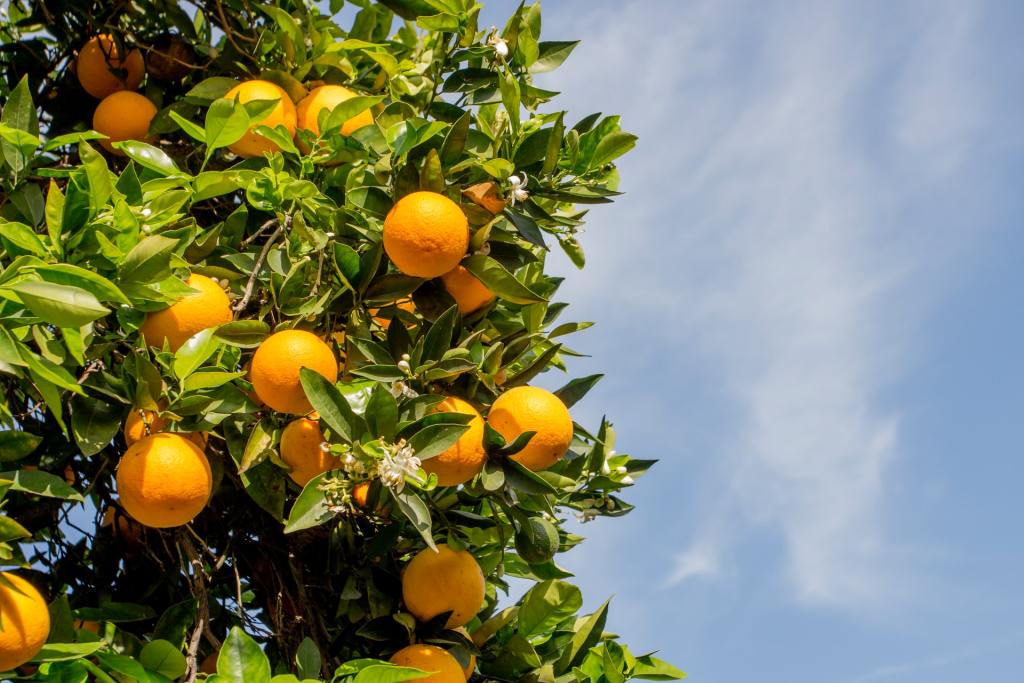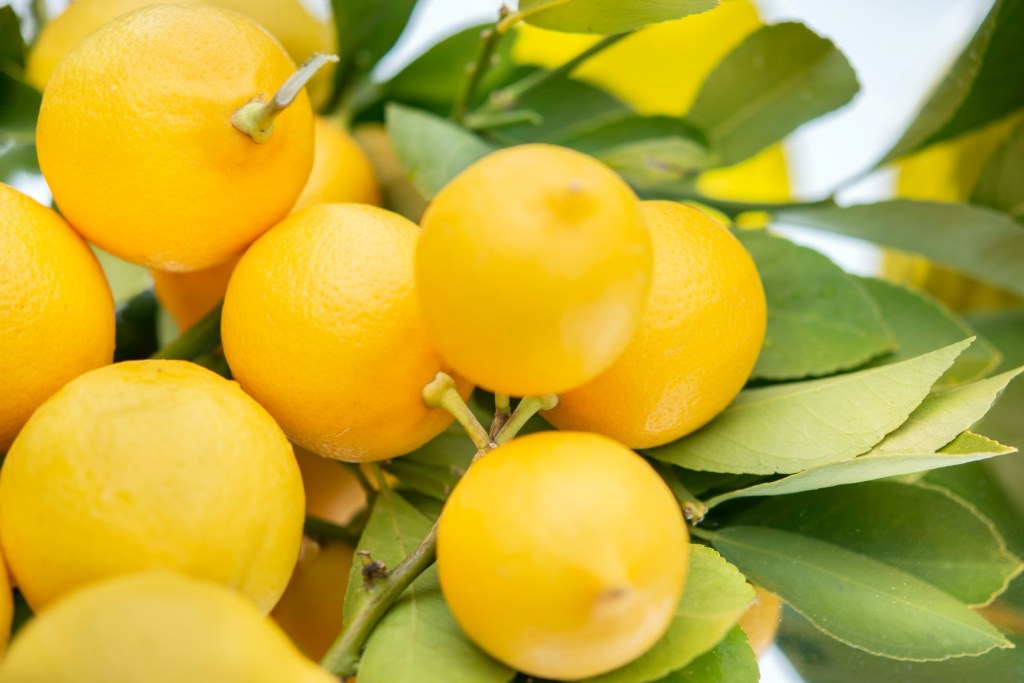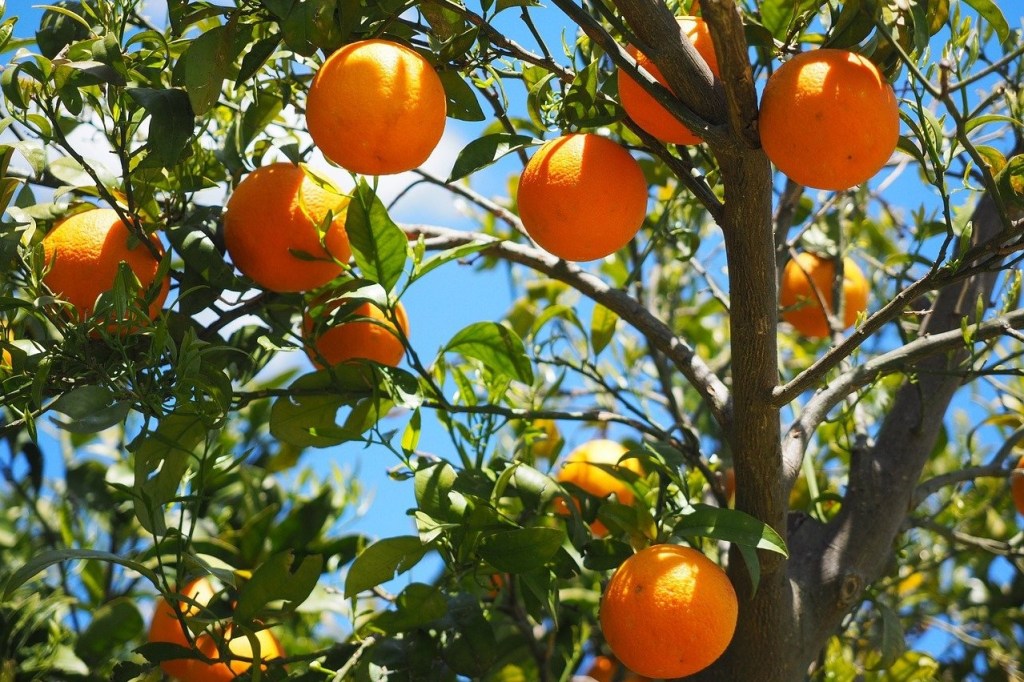With beautiful foliage and delicious fruits, citrus trees make for attractive mainstays in groves and spacious backyards. But is an indoor citrus tree a pipe dream? Can one nourish a healthy and productive orange tree indoors? The surprising answer is yes. In fact, some gardeners even bring their citrus trees indoors over winter and take them back outside during the spring! Ahead, we go over how you can choose a citrus tree for your home and what steps you can take to help it flourish.

How to plant your citrus tree indoors
For indoor plants, you want to opt for a dwarf variety seedling that’s a manageable size indoors—some small citrus trees that you can grow indoors include tangerine, kumquat, lemon, and orange ones. While most large commercial citrus plants are grown in warm regions, many smaller potted varieties can thrive inside, especially if you don’t have yard space or live in a modest apartment. Specific species that do well inside include the calamondin orange, Otaheite orange, Ponderosa lemon, and Meyer lemon.
While you want to pot your tree in a spacious 10 to 12 inch planter (preferably terracotta for better moisture-wicking), you also want to make sure not to have so much soil that you drown your plant roots whenever you water them. Citrus trees thrive in arid climates, so they prefer well-draining soil—you can usually get cactus, citrus, and palm mix anywhere that sells potting mix. Without good drainage, you might notice yellow, dropping leaves and soggy pot bottoms. In addition to creating good drainage, you should test your soil with soil strips to make sure that it’s slightly acidic, anywhere between a 5.5 and 6.5 on the pH scale.

How to care for your citrus tree indoors
Caring for a citrus tree indoors can be tricky, but it’s not altogether impossible. Here are some general guidelines for keeping your homebound plant lush and healthy.
- Light: Typically, citrus trees need eight to 12 hours of light a day. When kept indoors, citrus trees enjoy bright direct light for at least three to five hours a day. A south-facing window is the best option for your citrus tree, but if you’re not getting sufficient light, you can always supplement with a grow light for a few hours at night.
- Water: When placed in containers indoors, citrus trees will need more frequent watering, but you don’t necessarily want to overwater your tree, especially in the winter. Citrus plants should only be watered when the top inch or two feels dry. You never want the soil to feel moist—you’ll know it’s overwatered when it feels soggy and fungus gnats hover around your tree. For the most precise way to water your plant, you can invest in a moisture meter to see whether or not your plant truly needs watering. When you water, use room temperature water and throw away the runoff at the bottom.
- Fertilize: As soon as you plant your citrus tree, add citrus-specific, nitrogen-rich fertilizer to the top. Organic feed is generally gentler than the synthetic kind, so it can help you avoid leaf burn. Seaweed and fish fertilizer are also effective, but they may be, well, a little smelly. So how much should you fertilize? In the spring and summer, you can fertilize on a bi-monthly to monthly cadence.
- Air: Citrus trees appreciate humid air, so keep them next to a humidifier to give them moisture. During the hot months of summer and the cold months of winter, move them away from air conditioners and heaters, as drafts will stress their leaves and lead to leaves dropping. In terms of temperature, keep temperatures between 55 and 85 degrees in your home—if it’s comfortable for you, it should be comfortable for your plant.

How to get your indoor citrus tree to produce fruit
When people keep citrus trees indoors, they’re more often than not raising houseplants. But with that said, it’s not impossible to yield fruit to enjoy! In addition to giving your plant plenty of sunlight and fertilizer, you should also help your plant with pollination. You can use your fingers to spread the pollen around the flowers. Though your citrus tree may not yield big fruits or even many fruits indoors, it can still produce fruit with some due diligence.
For fragrant foliage and perhaps even fresh, beautiful fruit, citrus trees can very much survive indoors, even if they’re typically associated with lush groves in California and Florida. When picking out the right citrus tree for your home, pay attention to smaller varieties. While you probably can’t fit a 20-foot tree inside your apartment, you can nourish established seedlings of citrus trees such as the tangerine and Meyer lemon ones. As long as you give your plant plenty of light and are careful not to overwater it, you’ll have a happy and healthy citrus tree on your hands.



